Cheng Liu
University of Chinese Academy of Sciences
MA-CBP: A Criminal Behavior Prediction Framework Based on Multi-Agent Asynchronous Collaboration
Aug 08, 2025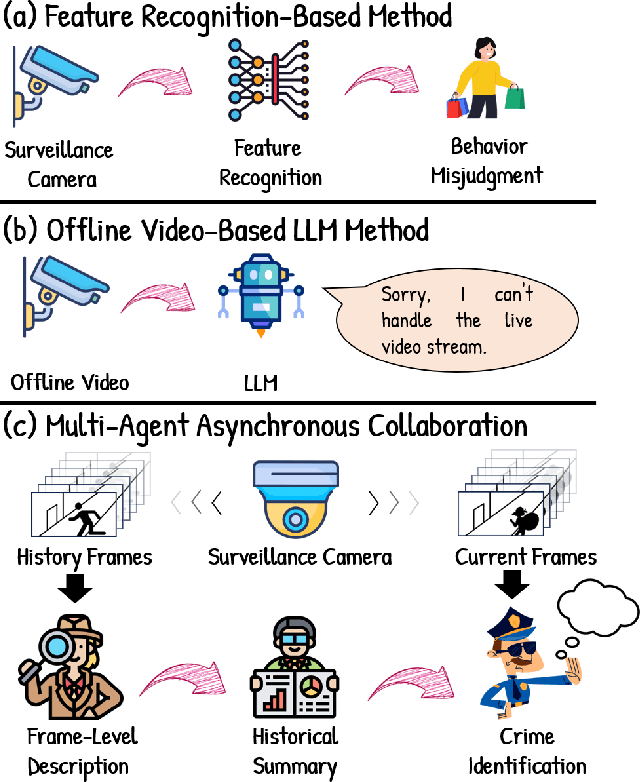

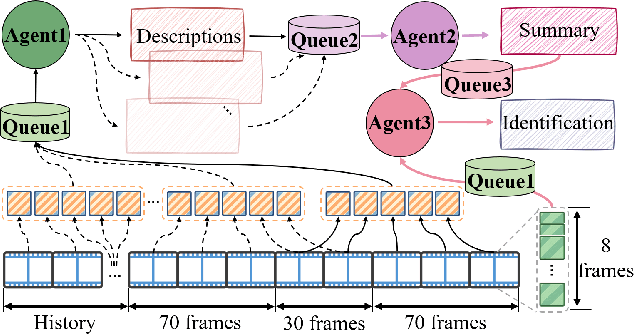
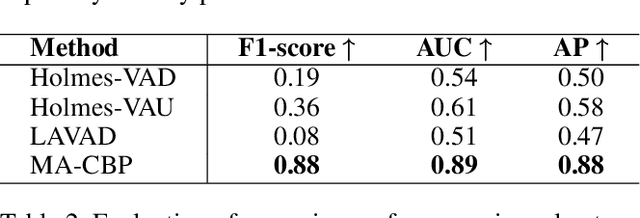
Abstract:With the acceleration of urbanization, criminal behavior in public scenes poses an increasingly serious threat to social security. Traditional anomaly detection methods based on feature recognition struggle to capture high-level behavioral semantics from historical information, while generative approaches based on Large Language Models (LLMs) often fail to meet real-time requirements. To address these challenges, we propose MA-CBP, a criminal behavior prediction framework based on multi-agent asynchronous collaboration. This framework transforms real-time video streams into frame-level semantic descriptions, constructs causally consistent historical summaries, and fuses adjacent image frames to perform joint reasoning over long- and short-term contexts. The resulting behavioral decisions include key elements such as event subjects, locations, and causes, enabling early warning of potential criminal activity. In addition, we construct a high-quality criminal behavior dataset that provides multi-scale language supervision, including frame-level, summary-level, and event-level semantic annotations. Experimental results demonstrate that our method achieves superior performance on multiple datasets and offers a promising solution for risk warning in urban public safety scenarios.
Understanding and Mitigating Errors of LLM-Generated RTL Code
Aug 07, 2025Abstract:Despite the promising potential of large language model (LLM) based register-transfer-level (RTL) code generation, the overall success rate remains unsatisfactory. Errors arise from various factors, with limited understanding of specific failure causes hindering improvement. To address this, we conduct a comprehensive error analysis and manual categorization. Our findings reveal that most errors stem not from LLM reasoning limitations, but from insufficient RTL programming knowledge, poor understanding of circuit concepts, ambiguous design descriptions, or misinterpretation of complex multimodal inputs. Leveraging in-context learning, we propose targeted error correction techniques. Specifically, we construct a domain-specific knowledge base and employ retrieval-augmented generation (RAG) to supply necessary RTL knowledge. To mitigate ambiguity errors, we introduce design description rules and implement a rule-checking mechanism. For multimodal misinterpretation, we integrate external tools to convert inputs into LLM-compatible meta-formats. For remaining errors, we adopt an iterative debugging loop (simulation-error localization-correction). Integrating these techniques into an LLM-based framework significantly improves performance. We incorporate these error correction techniques into a foundational LLM-based RTL code generation framework, resulting in significantly improved performance. Experimental results show that our enhanced framework achieves 91.0\% accuracy on the VerilogEval benchmark, surpassing the baseline code generation approach by 32.7\%, demonstrating the effectiveness of our methods.
CogDual: Enhancing Dual Cognition of LLMs via Reinforcement Learning with Implicit Rule-Based Rewards
Jul 23, 2025Abstract:Role-Playing Language Agents (RPLAs) have emerged as a significant application direction for Large Language Models (LLMs). Existing approaches typically rely on prompt engineering or supervised fine-tuning to enable models to imitate character behaviors in specific scenarios, but often neglect the underlying \emph{cognitive} mechanisms driving these behaviors. Inspired by cognitive psychology, we introduce \textbf{CogDual}, a novel RPLA adopting a \textit{cognize-then-respond } reasoning paradigm. By jointly modeling external situational awareness and internal self-awareness, CogDual generates responses with improved character consistency and contextual alignment. To further optimize the performance, we employ reinforcement learning with two general-purpose reward schemes designed for open-domain text generation. Extensive experiments on the CoSER benchmark, as well as Cross-MR and LifeChoice, demonstrate that CogDual consistently outperforms existing baselines and generalizes effectively across diverse role-playing tasks.
Hardware-software co-exploration with racetrack memory based in-memory computing for CNN inference in embedded systems
Jul 02, 2025Abstract:Deep neural networks generate and process large volumes of data, posing challenges for low-resource embedded systems. In-memory computing has been demonstrated as an efficient computing infrastructure and shows promise for embedded AI applications. Among newly-researched memory technologies, racetrack memory is a non-volatile technology that allows high data density fabrication, making it a good fit for in-memory computing. However, integrating in-memory arithmetic circuits with memory cells affects both the memory density and power efficiency. It remains challenging to build efficient in-memory arithmetic circuits on racetrack memory within area and energy constraints. To this end, we present an efficient in-memory convolutional neural network (CNN) accelerator optimized for use with racetrack memory. We design a series of fundamental arithmetic circuits as in-memory computing cells suited for multiply-and-accumulate operations. Moreover, we explore the design space of racetrack memory based systems and CNN model architectures, employing co-design to improve the efficiency and performance of performing CNN inference in racetrack memory while maintaining model accuracy. Our designed circuits and model-system co-optimization strategies achieve a small memory bank area with significant improvements in energy and performance for racetrack memory based embedded systems.
OmniConsistency: Learning Style-Agnostic Consistency from Paired Stylization Data
May 24, 2025
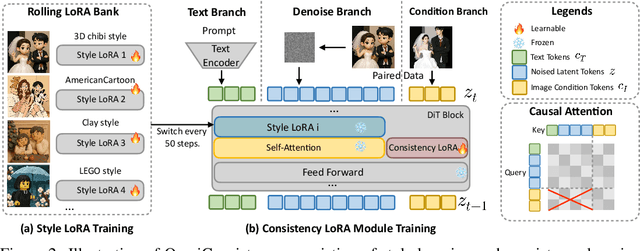

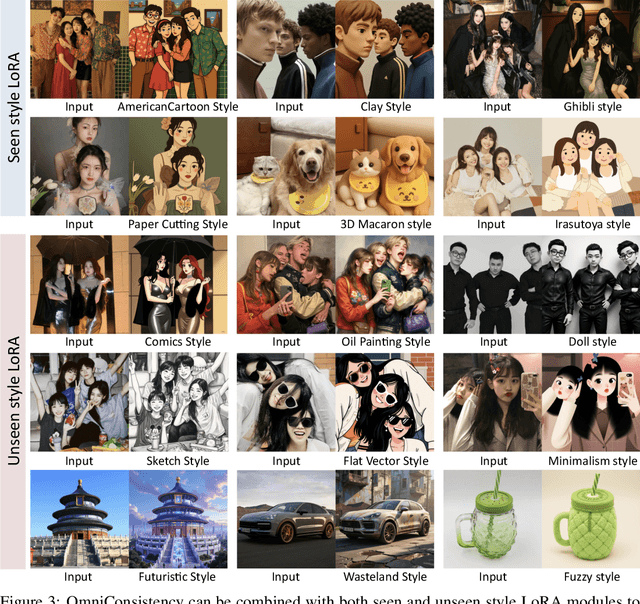
Abstract:Diffusion models have advanced image stylization significantly, yet two core challenges persist: (1) maintaining consistent stylization in complex scenes, particularly identity, composition, and fine details, and (2) preventing style degradation in image-to-image pipelines with style LoRAs. GPT-4o's exceptional stylization consistency highlights the performance gap between open-source methods and proprietary models. To bridge this gap, we propose \textbf{OmniConsistency}, a universal consistency plugin leveraging large-scale Diffusion Transformers (DiTs). OmniConsistency contributes: (1) an in-context consistency learning framework trained on aligned image pairs for robust generalization; (2) a two-stage progressive learning strategy decoupling style learning from consistency preservation to mitigate style degradation; and (3) a fully plug-and-play design compatible with arbitrary style LoRAs under the Flux framework. Extensive experiments show that OmniConsistency significantly enhances visual coherence and aesthetic quality, achieving performance comparable to commercial state-of-the-art model GPT-4o.
Is Quantum Optimization Ready? An Effort Towards Neural Network Compression using Adiabatic Quantum Computing
May 22, 2025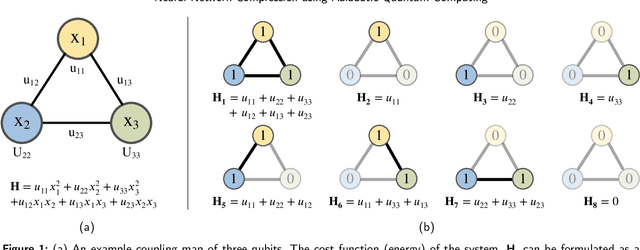
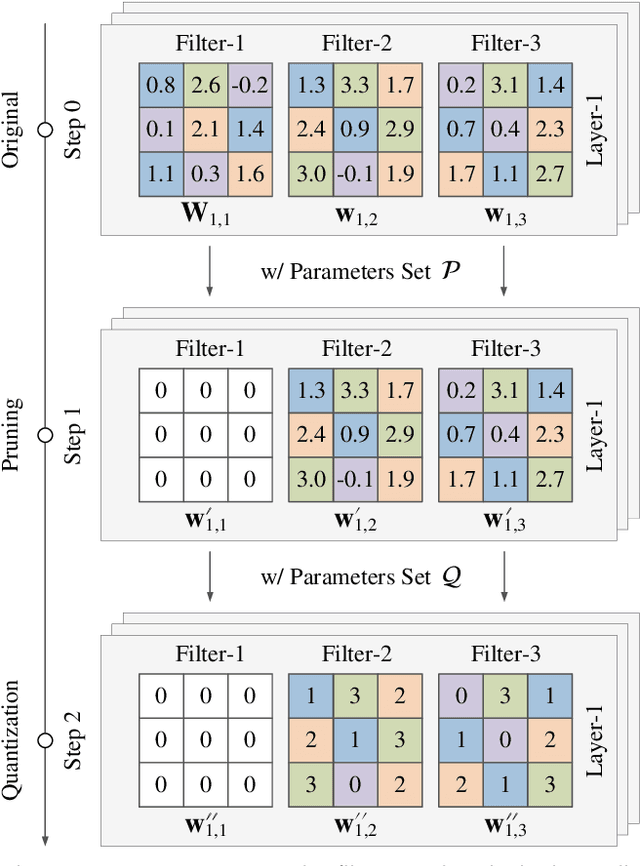
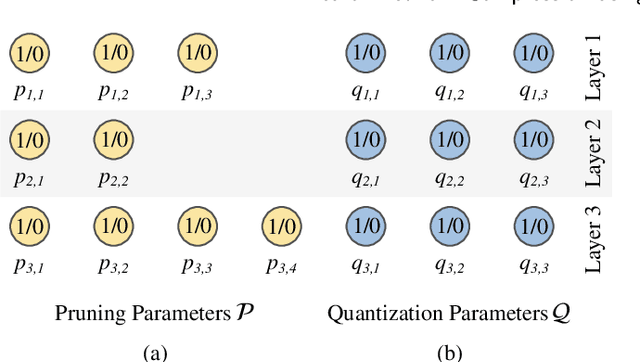

Abstract:Quantum optimization is the most mature quantum computing technology to date, providing a promising approach towards efficiently solving complex combinatorial problems. Methods such as adiabatic quantum computing (AQC) have been employed in recent years on important optimization problems across various domains. In deep learning, deep neural networks (DNN) have reached immense sizes to support new predictive capabilities. Optimization of large-scale models is critical for sustainable deployment, but becomes increasingly challenging with ever-growing model sizes and complexity. While quantum optimization is suitable for solving complex problems, its application to DNN optimization is not straightforward, requiring thorough reformulation for compatibility with commercially available quantum devices. In this work, we explore the potential of adopting AQC for fine-grained pruning-quantization of convolutional neural networks. We rework established heuristics to formulate model compression as a quadratic unconstrained binary optimization (QUBO) problem, and assess the solution space offered by commercial quantum annealing devices. Through our exploratory efforts of reformulation, we demonstrate that AQC can achieve effective compression of practical DNN models. Experiments demonstrate that adiabatic quantum computing (AQC) not only outperforms classical algorithms like genetic algorithms and reinforcement learning in terms of time efficiency but also excels at identifying global optima.
Hoi2Anomaly: An Explainable Anomaly Detection Approach Guided by Human-Object Interaction
Mar 13, 2025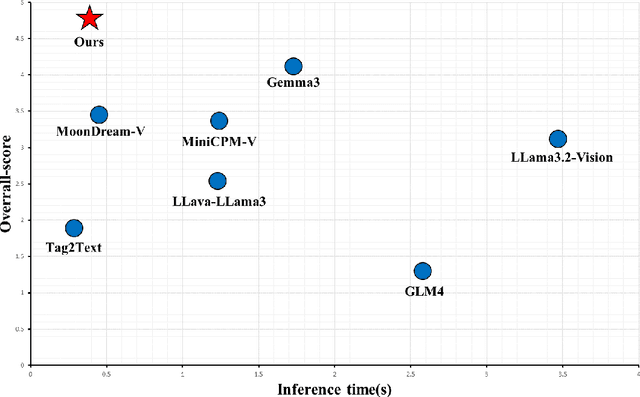

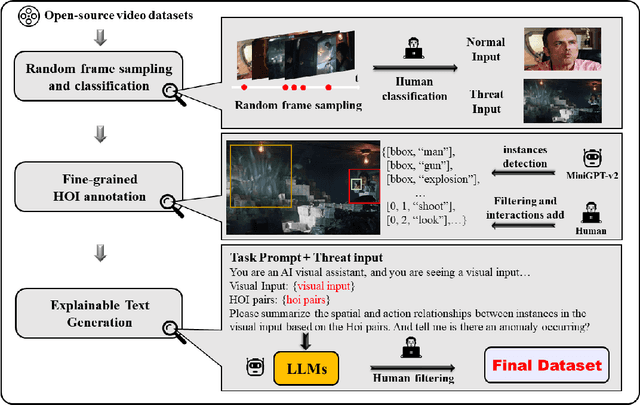

Abstract:In the domain of Image Anomaly Detection (IAD), Existing methods frequently exhibit a paucity of fine-grained, interpretable semantic information, resulting in the detection of anomalous entities or activities that are susceptible to machine illusions. This deficiency often leads to the detection of anomalous entities or actions that are susceptible to machine illusions and lack sufficient explanation. In this thesis, we propose a novel approach to anomaly detection, termed Hoi2Anomaly, which aims to achieve precise discrimination and localization of anomalies. The proposed methodology involves the construction of a multi-modal instruction tuning dataset comprising human-object interaction (HOI) pairs in anomalous scenarios. Second, we have trained an HOI extractor in threat scenarios to localize and match anomalous actions and entities. Finally, explanatory content is generated for the detected anomalous HOI by fine-tuning the visual language pretraining (VLP) framework. The experimental results demonstrate that Hoi2Anomaly surpasses existing generative approaches in terms of precision and explainability. We will release Hoi2Anomaly for the advancement of the field of anomaly detection.
Motion-Coupled Mapping Algorithm for Hybrid Rice Canopy
Feb 22, 2025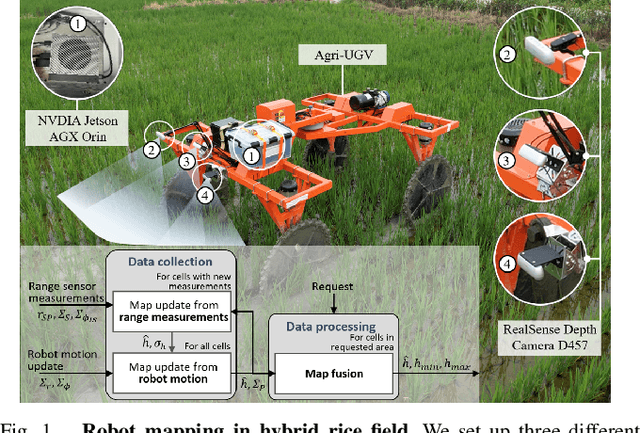
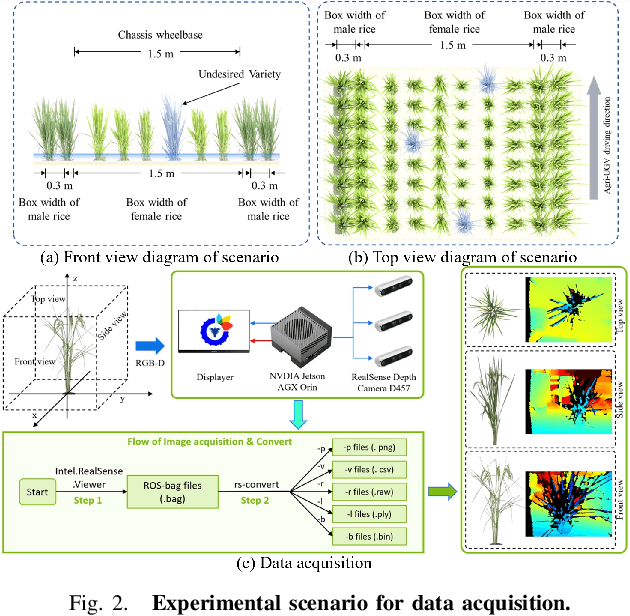
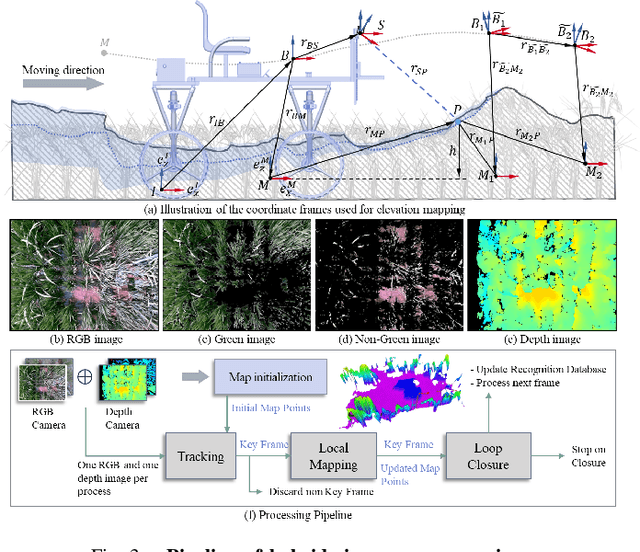
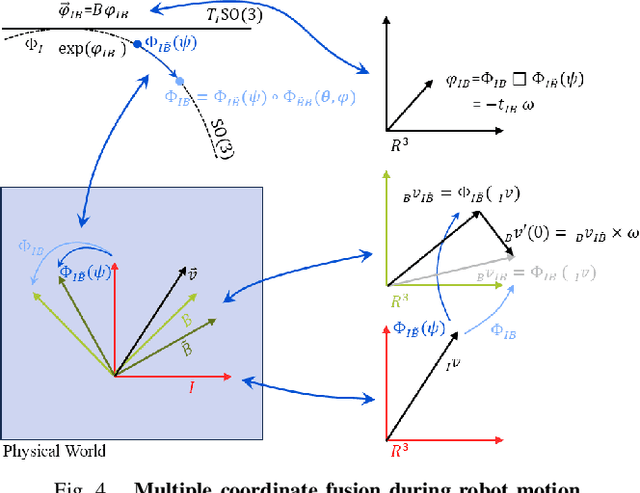
Abstract:This paper presents a motion-coupled mapping algorithm for contour mapping of hybrid rice canopies, specifically designed for Agricultural Unmanned Ground Vehicles (Agri-UGV) navigating complex and unknown rice fields. Precise canopy mapping is essential for Agri-UGVs to plan efficient routes and avoid protected zones. The motion control of Agri-UGVs, tasked with impurity removal and other operations, depends heavily on accurate estimation of rice canopy height and structure. To achieve this, the proposed algorithm integrates real-time RGB-D sensor data with kinematic and inertial measurements, enabling efficient mapping and proprioceptive localization. The algorithm produces grid-based elevation maps that reflect the probabilistic distribution of canopy contours, accounting for motion-induced uncertainties. It is implemented on a high-clearance Agri-UGV platform and tested in various environments, including both controlled and dynamic rice field settings. This approach significantly enhances the mapping accuracy and operational reliability of Agri-UGVs, contributing to more efficient autonomous agricultural operations.
* Best Paper Award First Place - IROS 2024 Workshop on AI and Robotics For Future Farming
S$^2$R: Teaching LLMs to Self-verify and Self-correct via Reinforcement Learning
Feb 18, 2025



Abstract:Recent studies have demonstrated the effectiveness of LLM test-time scaling. However, existing approaches to incentivize LLMs' deep thinking abilities generally require large-scale data or significant training efforts. Meanwhile, it remains unclear how to improve the thinking abilities of less powerful base models. In this work, we introduce S$^2$R, an efficient framework that enhances LLM reasoning by teaching models to self-verify and self-correct during inference. Specifically, we first initialize LLMs with iterative self-verification and self-correction behaviors through supervised fine-tuning on carefully curated data. The self-verification and self-correction skills are then further strengthened by both outcome-level and process-level reinforcement learning, with minimized resource requirements, enabling the model to adaptively refine its reasoning process during inference. Our results demonstrate that, with only 3.1k self-verifying and self-correcting behavior initialization samples, Qwen2.5-math-7B achieves an accuracy improvement from 51.0\% to 81.6\%, outperforming models trained on an equivalent amount of long-CoT distilled data. Extensive experiments and analysis based on three base models across both in-domain and out-of-domain benchmarks validate the effectiveness of S$^2$R. Our code and data are available at https://github.com/NineAbyss/S2R.
MakeAnything: Harnessing Diffusion Transformers for Multi-Domain Procedural Sequence Generation
Feb 03, 2025



Abstract:A hallmark of human intelligence is the ability to create complex artifacts through structured multi-step processes. Generating procedural tutorials with AI is a longstanding but challenging goal, facing three key obstacles: (1) scarcity of multi-task procedural datasets, (2) maintaining logical continuity and visual consistency between steps, and (3) generalizing across multiple domains. To address these challenges, we propose a multi-domain dataset covering 21 tasks with over 24,000 procedural sequences. Building upon this foundation, we introduce MakeAnything, a framework based on the diffusion transformer (DIT), which leverages fine-tuning to activate the in-context capabilities of DIT for generating consistent procedural sequences. We introduce asymmetric low-rank adaptation (LoRA) for image generation, which balances generalization capabilities and task-specific performance by freezing encoder parameters while adaptively tuning decoder layers. Additionally, our ReCraft model enables image-to-process generation through spatiotemporal consistency constraints, allowing static images to be decomposed into plausible creation sequences. Extensive experiments demonstrate that MakeAnything surpasses existing methods, setting new performance benchmarks for procedural generation tasks.
 Add to Chrome
Add to Chrome Add to Firefox
Add to Firefox Add to Edge
Add to Edge